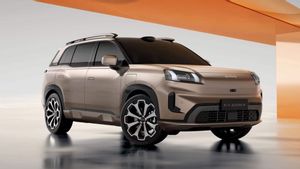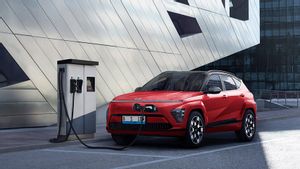JAKARTA - The United States National Highway Traffic Safety Administration (NHTSA) requires almost all new passenger cars and trucks sold in the country to have an automatic emergency brake system (AEB) starting September 2029. This rule is estimated to save at least 360 lives and prevent at least 24,000 injuries every year.
Earlier in 2016, 20 automakers voluntarily agreed to make AEB a standard feature for almost all vehicles in the United States by 2022. In December 2023, the Highway Safety Insurance Institute (Insurance Institute for Highway Safety) reported that all of the 20 automakers had embedded AEB at at least 95 percent of their vehicles.
We're ushering in a new era of safer travel by ensuring new cars and light trucks are equipped with automatic emergency braking. We estimate this rule will save hundreds of lives & prevent thousands of injuries every year. https://t.co/yUNUIW7clw
— Secretary Pete Buttigieg (@SecretaryPete) April 29, 2024
We're ushering in a new era of safer travel by ensuring new cars and light trucks are equipped with automatic emergency braking. We estimate this rule will save hundreds of lives & prevent thousands of injuries every year. https://t.co/yUNUIW7clw
Launching Reuters on April 30, this policy comes amid a sharp increase in the death rate due to traffic accidents after the COVID-19 pandemic lockdown.
This new rule actually follows the direction of Congress as stated in the 2021 infrastructure law. NHTSA is asked to make regulations related to the minimum performance standard for the AEB system.
The AEB system uses sensors such as cameras and radar to detect potential collisions. If the driver does not react, the car brakes will be automatically activated to prevent accidents.
The latest rules require the AEB system to detect pedestrians both during the day and at night. Car manufacturers with limited production are given time until September 2030 to comply with this rule.
Previously in 2023, NHTSA suggested that almost all vehicles must comply within three years after the rules were issued. However, now the car manufacturer is given five years.
SEE ALSO:
NHTSA requires all cars and trucks to stop and avoid hitting the vehicle in front of them up to 62 miles per hour (nearly 100 km/hour). At higher speeds, up to 90 mph (nearly 145 km/hour), the system must automatically brake the car to prevent collisions with other vehicles in front. Meanwhile, to avoid pedestrians, the system must be active up to 45 mph (nearly 73 km/hour).
Although the death rate from traffic accidents in the United States fell 3.6 percent in 2023, the number is still much higher than before the pandemic. In fact, the death rate in 2023 was the highest since 2008, surpassing the figure in pre-pandemic years.
In 2022, the number of pedestrians killed in traffic accidents rose 0.7 percent to 7,522, the highest figure since 1981.
The English, Chinese, Japanese, Arabic, and French versions are automatically generated by the AI. So there may still be inaccuracies in translating, please always see Indonesian as our main language. (system supported by DigitalSiber.id)
















